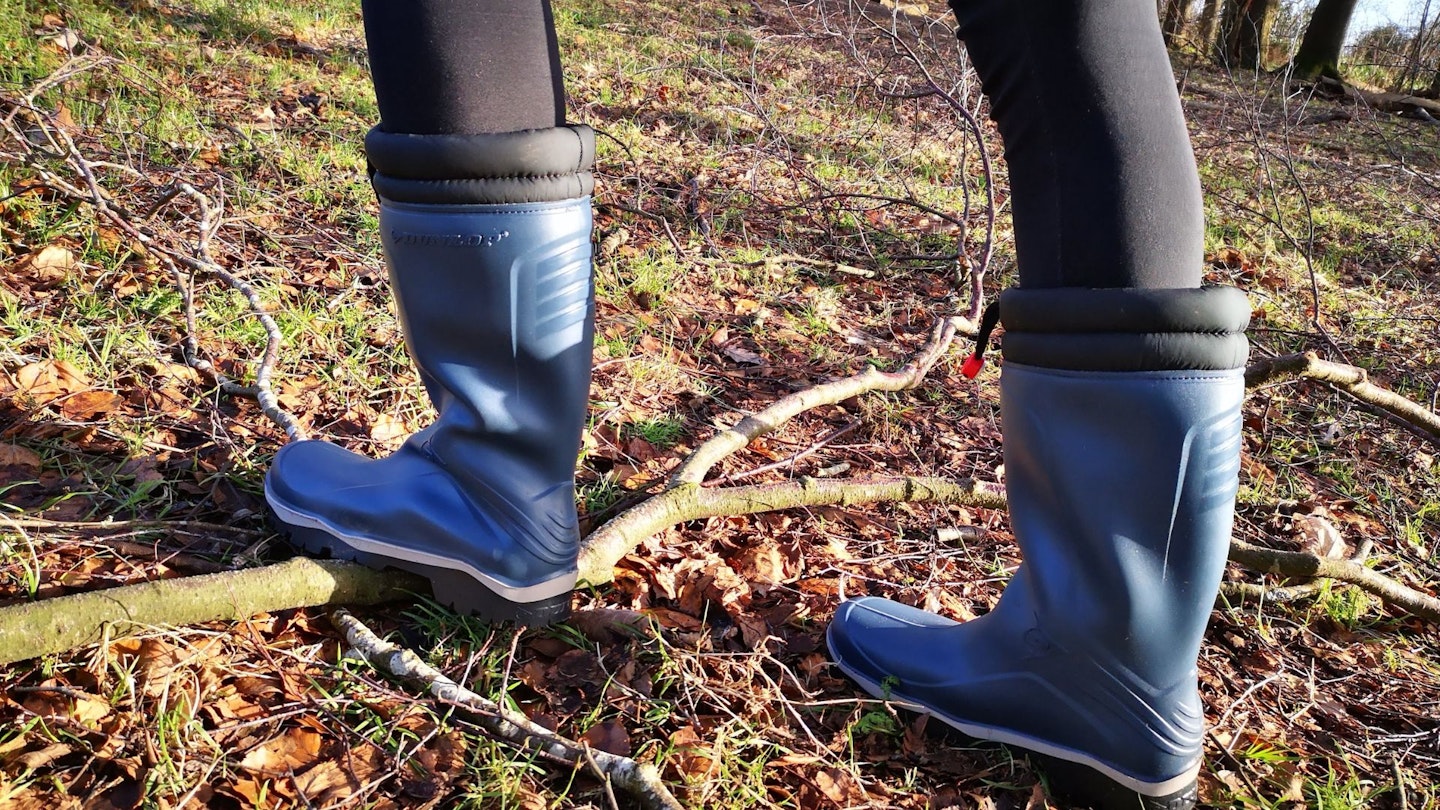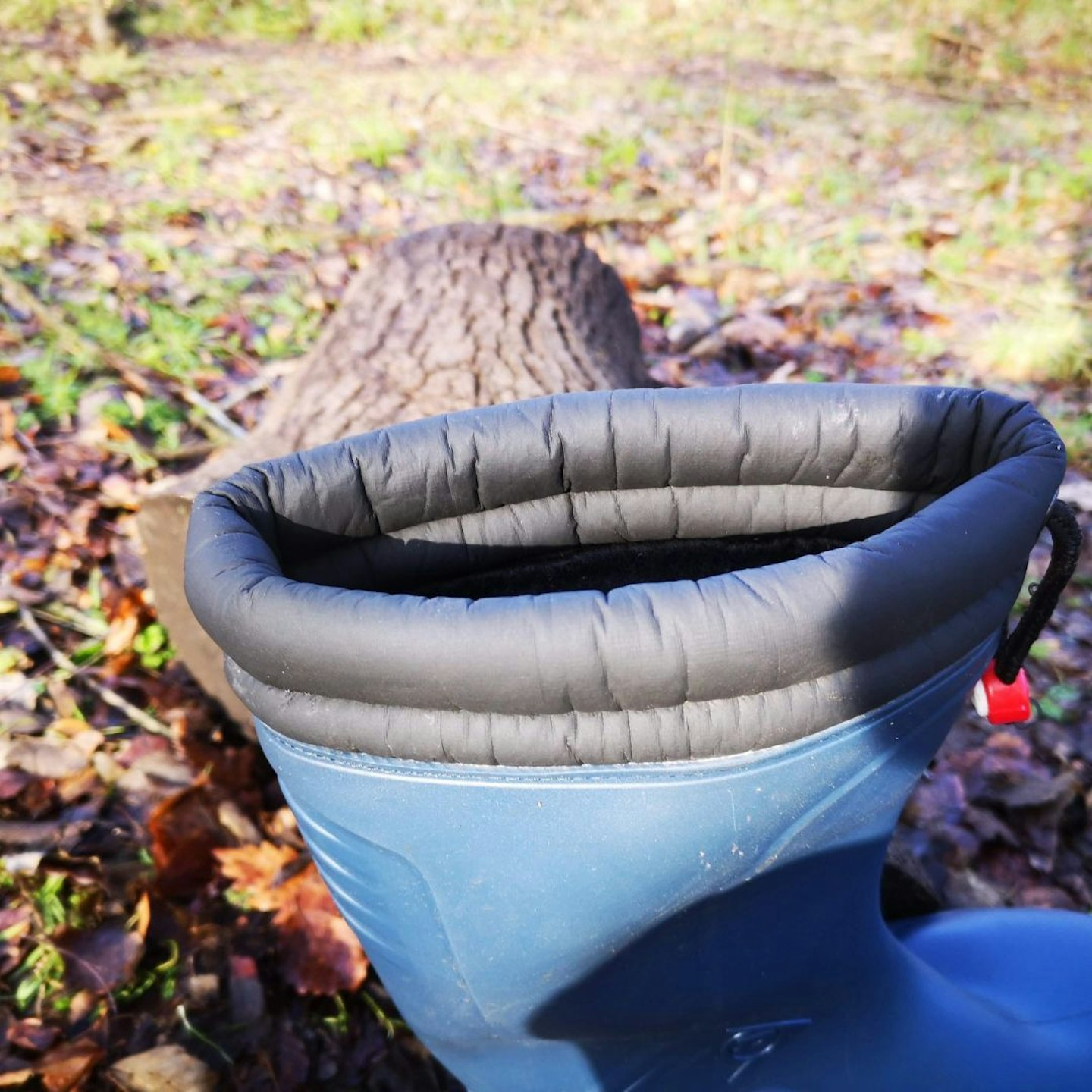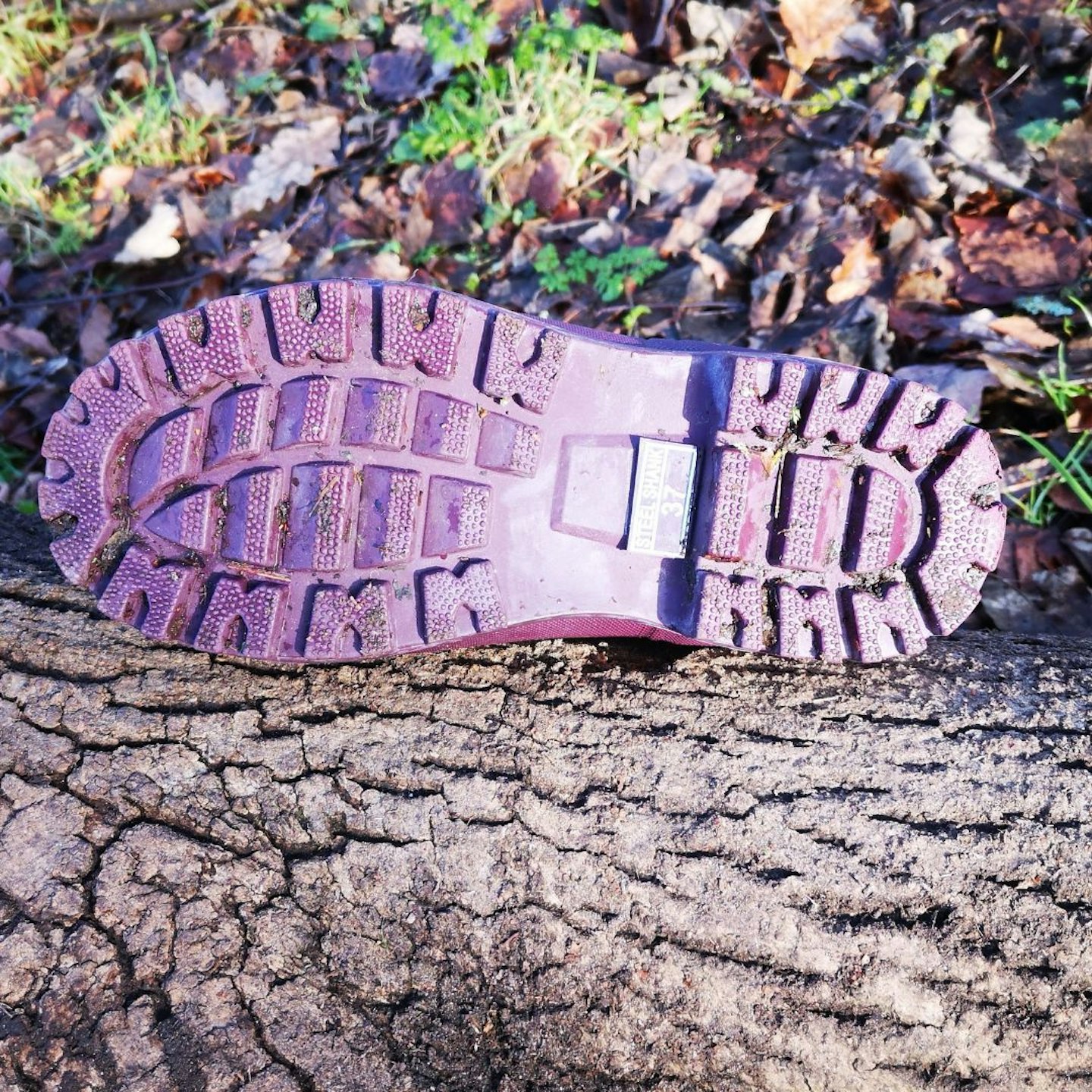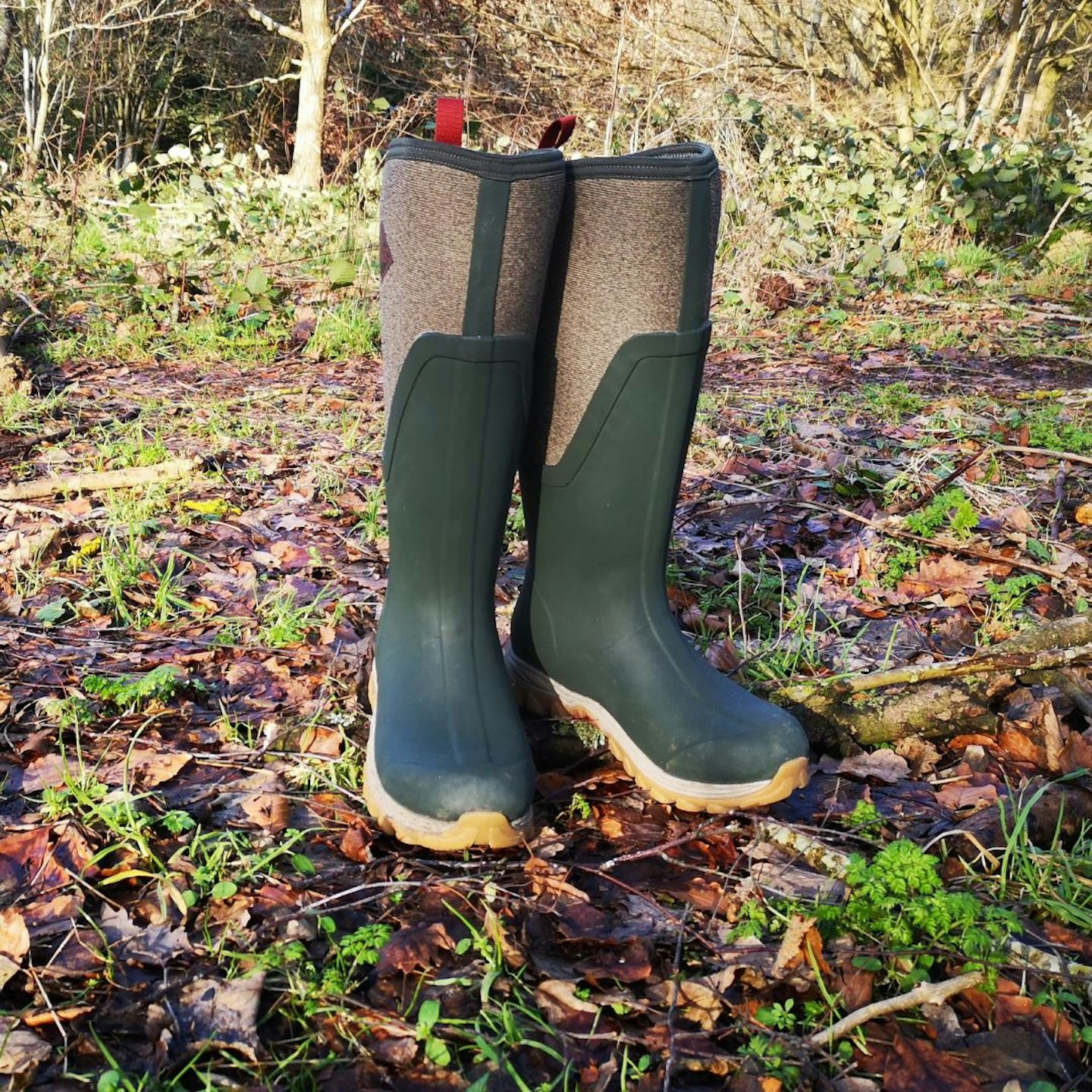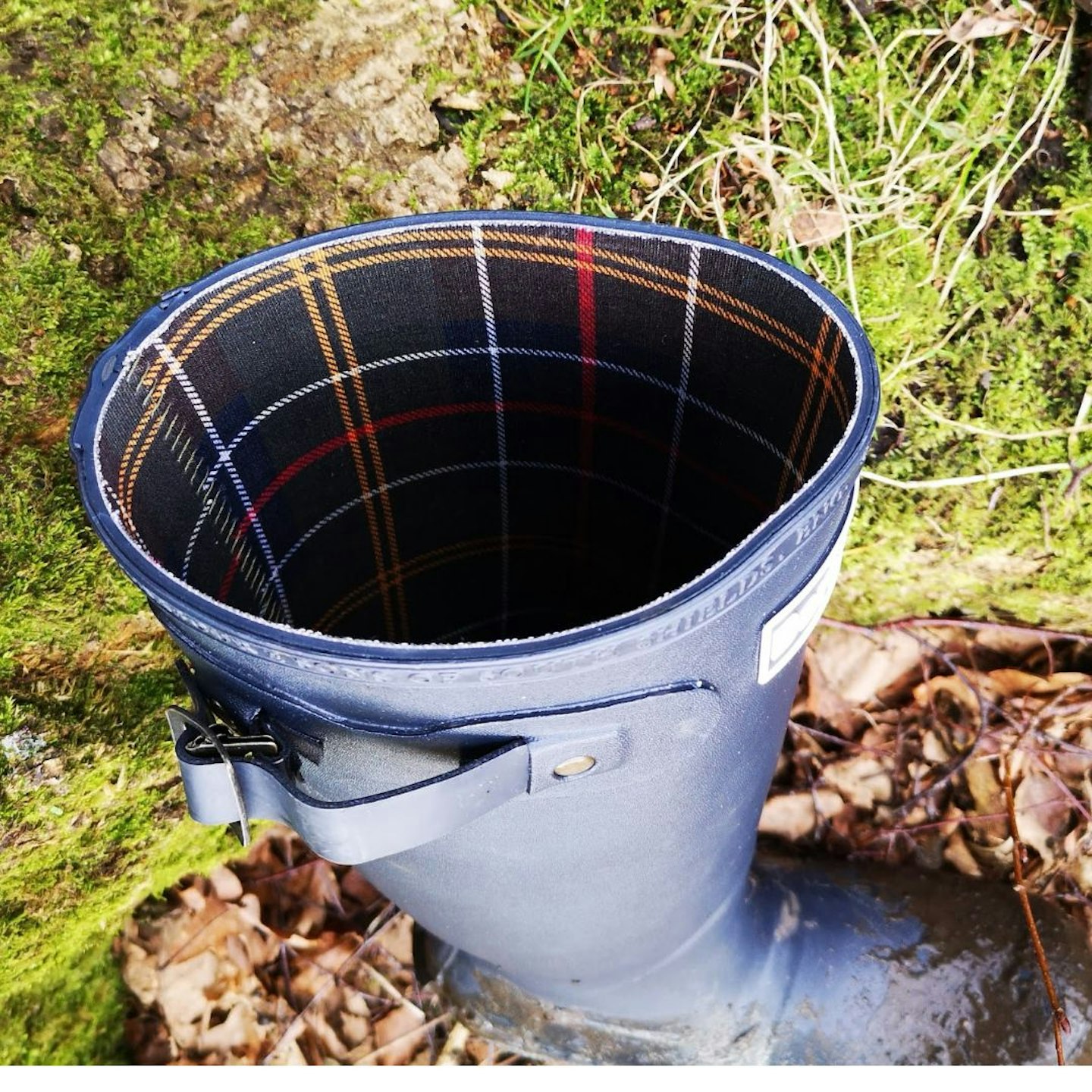Walking wellies are growing in popularity as the UK embraces squelchy dog walks and casual Sunday pub rambles that don’t require technical walking boots. We put eight of the best wellies for walking to the test to see which ones stand up to the challenge, and which ones get stuck in the mud.
Any fisherman will tell you that all wellies should be tough, durable and, of course, completely waterproof. However, beyond being fashionable North Sea attire, wellies (more formerly known as wellington boots) are a popular choice for dog walking and other longer, boggier endeavours.
The best wellies for walking simply have to be comfortable, allowing your feet to breathe and move without feeling like they’re trapped in a stiff rubber tube.

Insulation is also an important point when it comes to choosing the best wellies for walking: you don’t want your toes to be falling off from the cold, but nor do you want to be sloshing about in a sea of sweat if you’re covering longer distances.
Plus, if you’re using your wellies for dog walking, you want them to fit snugly so you’re not pulled out of them as soon as your pooch gets a whiff of something potent.
Editor's note: This article was updated in April 2025, when we added six new reviews of walking wellies. In this update, we also added further buying advice to the guide at the bottom of this article.
What are the best wellies for walking in 2025?
Best in test: Dunlop Snugboots
Best value: Decathlon Solongnac Warm PVC Wellies
Best for comfort: Muck Boots Arctic Sport II Tall Boots
How we tested the best walking wellies

These wellington boots were tested by Fliss Freeborn and Nick Hallissey. Fliss tested primarily on sections of the West Highland Way in Scotland in January 2024, at the tail end of storm Jocelyn. She enlisted help from friends with similarly sized feet, and the boots were swapped about periodically between testers for fairness over different foot widths, shapes and calf sizes.
Fliss has also worn each pair of welly boots while walking her in-laws' unruly Hungarian Vizslas, and has also tested them while running errands in her home city of Glasgow, including for shopping, cycling, driving, and going to the pub.
Meanwhile, Nick has tested his share of the wellies in over the winter of 2024/2025, wearing them on a range of country trails to check their traction, comfort, durability and general performance.
Best wellies for walking reviewed:
The Dunlop Snugboots really do live up to their name. By far the most ergonomic of the wellies on test, they immediately mold to your feet, making them feel supported and - well - loved, from the first insertion. They’re designed with movement in mind, so perform incredibly well for walking, and their waterproofing is second to none.
They have chunky soles for excellent grip, and because of the form-fitting interior, they don’t slop about at all on the feet, making them feel more like walking boots than wellies.
They’re also breathable while staying warm, and due to the wide calf fit, are easy to get on and off without your socks being left behind.
They are the chunkiest boots of the lot, however, weighing in at over 800g each. You’ll be anchored down in a hurricane, no doubt. They also look incredibly industrial, so don’t win points on style for the most part (but you’re guaranteed a ruggedness which doesn't come with some of the more fashionable brands).
The other thing to say about the Snugboots is that they’re slightly shorter than the rest of the wellies on test, but unless you’re planning to romp through fast-flowing rivers on the daily, then it shouldn’t be too much of an issue.
Pros
- Outrageously comfortable over long distances
- Good value
- Breathable
- Industrially durable
Cons
- Very chunky
- Not as stylish as other wellies
| Unisex sizes | 4 - 13 |
| Weight (UK size 5) | 822g |
The cheapest pair on test, these Warm PVC wellies from Decathlon offer surprising levels of comfort and warmth, as well as having excellent grip.
They come in two sizes rolled into one (I’m wearing the 37/38) which might be a problem if you’re bang-on either size. However, at a solid size 4.5, these fit me well, if a little snugly around the calves when wearing my merino socks. Without any adjustability - the boots are rubber the whole way, rather than being cut with neoprene - this could pose a problem for larger-calved people.
In terms of walking, however, the snug fit actually makes them pretty comfortable, without much in the way of heel lift. There's good ankle flexibility too, but like some of the other pairs on test, this is double edged sword: they're comfortable over short distances but lacking the foot support you'll need for longer hikes.
These boots will suit anyone with narrow or average feet; if you have unnaturally wide clompers, you may be off with the Dunlop Blizzards (below). On the plus side, the lining is toasty in cold weather, and they’re flexible enough not to restrict blood flow - the worst thing for your feet when it’s chilly out.
For a budget welly which isn’t just a big rubber sheath for your feet and lower legs, these are pretty great: soft, warm, comfy enough over distances under 5km, and they seem pretty robust so far, not letting in any water.
They’re also a decent length; not too long to impede knee movement, but tall enough to conquer the majority of muddy puddles. And sure, sludge-brown isn’t anyone’s first choice of colour, but at under £25, we’re not going to complain.
Pros
- Great value
- Warm
- Flexible for walking
Cons
- Not great for wide feer
- Less than optimal colour choice
| Unisex sizes | 2.5 - 11 |
| Weight per boot (UK 4-5) | 712g |
Think of the Dunlop Blizzard as more of an outdoor slipper. They’re a mid-calf level boot with a supremely comfortable fleece lining, foam footbed and soft drawstring close.
However, what the Blizzards have in comfort, they lack in structure; the outer layer is floppy and bendable, with the most flex of any boot on test by a long way.
This is a double-edged sword, as for shorter distances, the Blizzards seem very comfortable due to their supreme ankle flexibility. However, over the 3-4km mark, your feet will be asking for a little more in the way of support, with the boots beginning to feel a little sloppy - which could lead to foot pain or blisters over time.
As one of the less expensive boots though, they represent good value in the walking welly category. Additionally, because of their flex, they fold down well for traveling with, and are one of the lighter boots on test.
Dunlop is also a solid brand in terms of quality, so these should have plenty of life in them for years, and the fleece lining hasn’t compacted too much over time, so should stay toasty for a while.
Pros
- Very comfortable
- High flexibility
- Good value
Cons
- Not much foot support
| Unisex sizes | 3.5 - 13 |
| Weight per boot (UK size 5) | 736g |
Available in some slightly more exciting colours than your bog-standard green, the Lakeland Active Rydal offers a comfortable - if slightly wide - fit. More importantly however, after putting the Rydal through some arduous dog-walking, this boot stays tough, durable and completely waterproof.
Features include a handy kick-rim and material tag for taking them on and off, a steel shank (footplate) for rigidity, and a waterproof neoprene upper. The soles have deep lugs but still maintain an element of responsiveness to the ground underfoot which some of the other boots on test lacked.
In terms of comfort, these score pretty highly, with a bouncy sole, flexible upper to accommodate a wide range of calf sizes, and optional removable insoles.
However, even for someone with wide feet, they do have a slightly sloppier fit than some others in the test, so undertaking miles upon miles of walking per week without your ankle being held in place properly might have blistery consequences, depending on the size of your instep.
Buying a separate pair of more structured insoles would solve any heel-lift issues over longer periods of time, but for walks less than 5km or so, the Rydals stand up to the task well.
Pros
- Great colour choices
- Neoprene uppers
- Durable
Cons
- Sloppy on narrower feet
| Men's sizes | 7 - 13 |
| Women's sizes | 3 - 9 |
| Weight per boot (UK size 4) | 774g |
We loved this tall version of the women’s-only Wonderwelly in our winter test last year. Somewhat annoyingly FitFlop have withdrawn it for the spring but you can still buy the short version (£45) on FitFlop’s website and the tall version is still available on other platforms including Amazon.
FitFlop call it ‘the world’s comfiest welly’, with biomechanical engineering, contoured sole, springboard forefoot and impact-cushioning heel. In effect, it’s a welly that genuinely feels like a walking boot – and at a reasonable price. And it’s adjustable via a strap at the rear calf, making it easy to get good, close fit.
It’s not lined, so it isn’t as toasty in winter as others in our roundup (but means it’s more versatile in the warmer months), plus the flat outsole isn’t as grippy as that of the Dunlops and Muck Boots in our test.
But it really is comfy on the go, and superb at handling sloppy farm gates and churned-up woodland. We’ve had a pair for three years and they’ve never let us down.
Pros
- Exceptionally comfortable, feels like a walking boot
- Adjustable rear calf strap for a secure fit
- Durable and long-lasting (tested over three years)
Cons
- Unlined, so not as warm in winter
- Flat outsole isn’t as grippy as some rivals
| RRP: | £47 |
| Women's sizes | 3 - 9 |
| Weight per boot (UK size 5) | 1.07kg |
Tall, stylish and incredibly form-fitting, the Women's Arctic Sport II Tall from Muck Boots are everything you’d want in a walking welly - provided you’re over 5ft 2in, with slim-ish calves.
As the name suggests, they’re the tallest boot of the bunch, offering complete waterproof protection right up to the knee. They also seem to repel both water and dirt, making them look brand new even after a few weeks of constant wear.
Performance wise, these were up there with the best in test. Doing a section of the West Highland Way in pouring rain was no problem for their neoprene waterproofing, and they were incredibly comfortable, with a good amount of foot support.
They’re also warm while remaining relatively breathable, and seem to be well-made, offering lots of flex at the ankle when needed, but bouncing back into shape with ease.
The MuckBoots are one of the more expensive wellies on test, but the quality seems to be high enough to warrant the price, especially when you discover that they’re also suitable Sunday pub lunch attire: complete the look with a waxed green jacket, ruddy cheeks and a tweed hat.
However, if you’re a hobbit with melons for calves, either the unisex version of the Arctics, or a different brand, such as the Dunlop SnugBoot, will be a better bet for you.
Pros
- Comfortable
- Neoprene upper
- Stylish
Cons
- Expensive
- Slim calf fit
| Women's sizes | 3 - 9 |
| Unisex sizes | 4 - 13 |
| Weight (UK size 5) | 800g |
Definitely on the fashionable, rather than practical end of the spectrum here, these Barbour wellies are good for short dog walks, festivals and instagrammable Sunday pub lunches.
The tartan lining is a particular highlight: this pair of boots wouldn’t look out of place in a posh lifestyle magazine, next to a couple of mucky spaniels and an appropriately weathered vintage sideboard.
If you’re after a classically shaped welly of decent quality for a price less eye-watering than some of its rival brands in the market, then the Barbour Bedes could be a good bet for you.
But if you’re looking for something that’ll keep your tootsies warm in winter, or stand up to long, more intense walking, then you’re better off with a different brand.
Pros
- Stylish
- Good value in comparison to similar brands
- Kick plate
Cons
- Not hugely practical over long distances
- Slim fitting calves
- Heavy
| Men's sizes | 6 - 12 |
| Women's sizes | 3 - 9 |
| Weight per boot (UK size 5) | 874g |
A remarkably-priced basic welly from retailer Decathlon, the Glenarm is durable enough for woodland and farmland walks, where its rugged outsole offers decent traction.
It’s not awfully sophisticated though; the opening is floppy which can make it tricky to get your feet in if you’re in a hurry (or the dark) and also means it doesn’t feel quite as supportive round the calf as the others in our test.
There’s also no adjustment. But the footbed is comfy enough, and for shorter muddy walks on squelchy days, it’s a reliable friend. It’s just had a price hike from £20 to £25, but that’s still a bargain for what you’re getting.
Pros
- Very affordable
- Durable for woodland and farmland walks
- Good traction from the rugged outsole
Cons
- Floppy opening makes them tricky to put on
- Lacks calf support and adjustability
| Men's sizes | 6 - 12 |
| Women's sizes | 3 - 9 |
| Weight per boot (UK size 5) | 925g |
Usually heavily discounted (£50 at present), the Mucker represents a great blend of quality build at a decent price. The entire upper section is made of neoprene rather than rubber, so it’s fabulously warm and flexible, but still has enough rigidity to make sliding your feet in and out easy.
Grip is good and there’s a pronounced heel brake to give you confidence going downhill on mud and wet grass.
The neoprene can get a bit soggy after heavy rain and needs a fair bit of drying out, and the calf cuff isn’t adjustable, but otherwise the Mucker is a great buy.
It even gives the similar but more prestigious Muck Boot Arctic Sport II a run for its money. (We also love the name. Alright, Mucker?)
Pros
- Warm and flexible neoprene upper
- Good grip with a pronounced heel brake
- Often heavily discounted
Cons
- Neoprene can absorb water and takes time to dry
- Calf cuff isn’t adjustable
| Men's sizes | 6 - 13 |
| Women's sizes | 4 - 8 |
| Weight per boot (UK size 5) | 885g |
Wellies for walking (not just gardening) were a revelation for me – specifically neoprene-lined ones with deep tread and a much closer fit than the flappy buckets I remember.
Le Chameau are at the top end of this market; they were the first to use neoprene in wellies, and to add calf adjustment and a proprietary vulcanised natural rubber which they say is softer and more durable than rivals.
I’ve used them for many walks through autumn, winter and spring – both for simple walks with the dogs and five-miles-plus walks through field and forest by self or with family.
Tall, imperious, butter-soft, with day-long grip and comfort – if you’re a welly walking convert you can buy cheap and buy twice, or bite the bullet and go first class. In this case, I very much recommend the latter.
Pros
- Neoprene-lined for warmth and comfort Calf adjustment for a close, secure fit Excellent grip and durability for long walks
Cons
- Expensive compared to other options Premium soft rubber may be less resistant to rough use
| RRP: | £47 |
| Women's sizes | 3 - 9 |
| Weight per boot (UK size 5) | 1.07kg |
How to pick a good pair of walking wellies
The most comfortable walking wellies will always need to have a supportive design with a good amount of flexibility. You'll also want to consider the materials used, the number of seams in the construction, and the flexibility and weight of your welly. Let's get into some more detail:

Neoprene vs rubber
A classic welly (the Decathlon pair, the Le Chameaus and the Barbour pair) will be a piece of rubber formed around a mold, then fitted with a grippy rubber sole.
However, many wellies are now integrating neoprene, which is a good idea for three reasons, the first of which is flexibility: having some amount of flex in the calf is great for walking, and will also accommodate different calf sizes.
The second reason is warmth: neoprene is ultimately far warmer than a single piece of rubber, so typically winter wellies will. The third reason is comfort – neoprene is softer than rubber and means you can forgo having to buy expensive welly socks, and it’s much more breathable to boot. If you’ll pardon the pun.
Calf and ankle flexibility

Seeing as you’ll be spending prolonged periods of time in your walking wellies, you’ll want a pair which don’t act like straight jackets for your legs, and have at least some amount of flexibility to the calf and ankle regions.
This will enable more natural walking movement and ensure that you’re not stressing your knees or hips in an unusual manner, which can lead to all sorts of problems down the line.
However, beware of your wellies being too sloppy: over long distances with varied terrain it'll be all too easy to twist an ankle if you're not supported enough.
As few seams as possible
Some wellies are made so cheaply that you’ll notice water ingress from where the sole joins the upper just about as soon as you jump into your first puddle.
To avoid this, you’ll want to look for walking wellies which are stitched as well as glued. When it comes to the sole, the fewer joins there are, the less likely you are to get wet feet.
To size up or to size down?

Seeing as walking wellies have less ankle flexibility and arch support than a standard hiking boot, it might be tempting to size up for comfort and just go for bigger socks. However, socks compress over time so the boot inevitably moves about more on your feet, resulting in blisters.
You’re best off finding a pair of wellies that both fit and insulate your feet without you having to go and buy extra thick socks. Failing that, a pair of structured insoles go a long way in making everything more supportive and comfortable, so if you are in any doubt, size up and fit some insoles.
On the other end of the scale, pay attention to whether there are parts of your feet that are being squeezed too much - the last thing you want is to cut off your blood supply in freezing cold weather.
Unlike leather walking boots, or even some trail shoes, walking wellies won’t conform to your foot shape over time, so it’s best to shop around for the right fit for you. If you have particularly wide feet, or a high instep you may struggle in some areas, but walking wellies do come in all shapes and sizes; there will be one for you!
Relatively lightweight
Ah, Ye Olde tradeoff for quality vs weight. A good pair of wellington boots shouldn’t feel like having to lug bricks about on your feet.
They should be sturdy and supportive, keeping you feeling secure on whatever terrain you’re trudging through, but if you feel like your walking wellies are hindering your flexibility or responsiveness to the ground below, then consider trading them in for a lighter pair.
Are wellies or walking boots better?
This really depends on the terrain you're planning to walk on. Walking boots offer more support, cushioning and comfort than wellington boots, so if you're going to be walking on really uneven ground, up/down prolonged steep inclines or for long days, then boots will be the better choice.
If you're going for short walks on less demanding terrain or are likely to be wading through deep mud, puddles, streams or water-logged fields, then some wellies can have the edge.
Can you walk long distance in wellies?
Sure, you could absolutely walk for miles in wellies, but do you really want to? As mentioned above, the level of support, stability and comfort on offer from wellington boots is never going to compete with proper hiking boots, so if you're walking long distance you may not find it very comfortable.
If you've worn wellies a lot, though, and built up your usage over time, then your legs and feet may be accustomed to long periods of time in this type of footwear. In this case, you may well be fine on walks of several hours up to even a day, as long as the ground isn't super demanding to walk on.
Keep in mind that when you start to get tired, your foot placement and ankle stability may well start to drop off, which can make you more susceptible to the twist of an ankle.
About the authors

Fliss Freeborn is a Welly Enthusiast who also happens to be a writer for LFTO. She spends most weekends outdoors doing something daft, and always puts her gear to the test in Scotland's unrelenting rain. Not because she enjoys the rain, but because lives in Glasgow and has no other choice.
Nick Hallissey is the head of content for Country Walking and Trail magazine, and he’s been chipping in on LFTO since the site was born over 15 years ago. He's been hiking, running and exploring for much of his life, from countryside strolls to high-mountain adventures.



